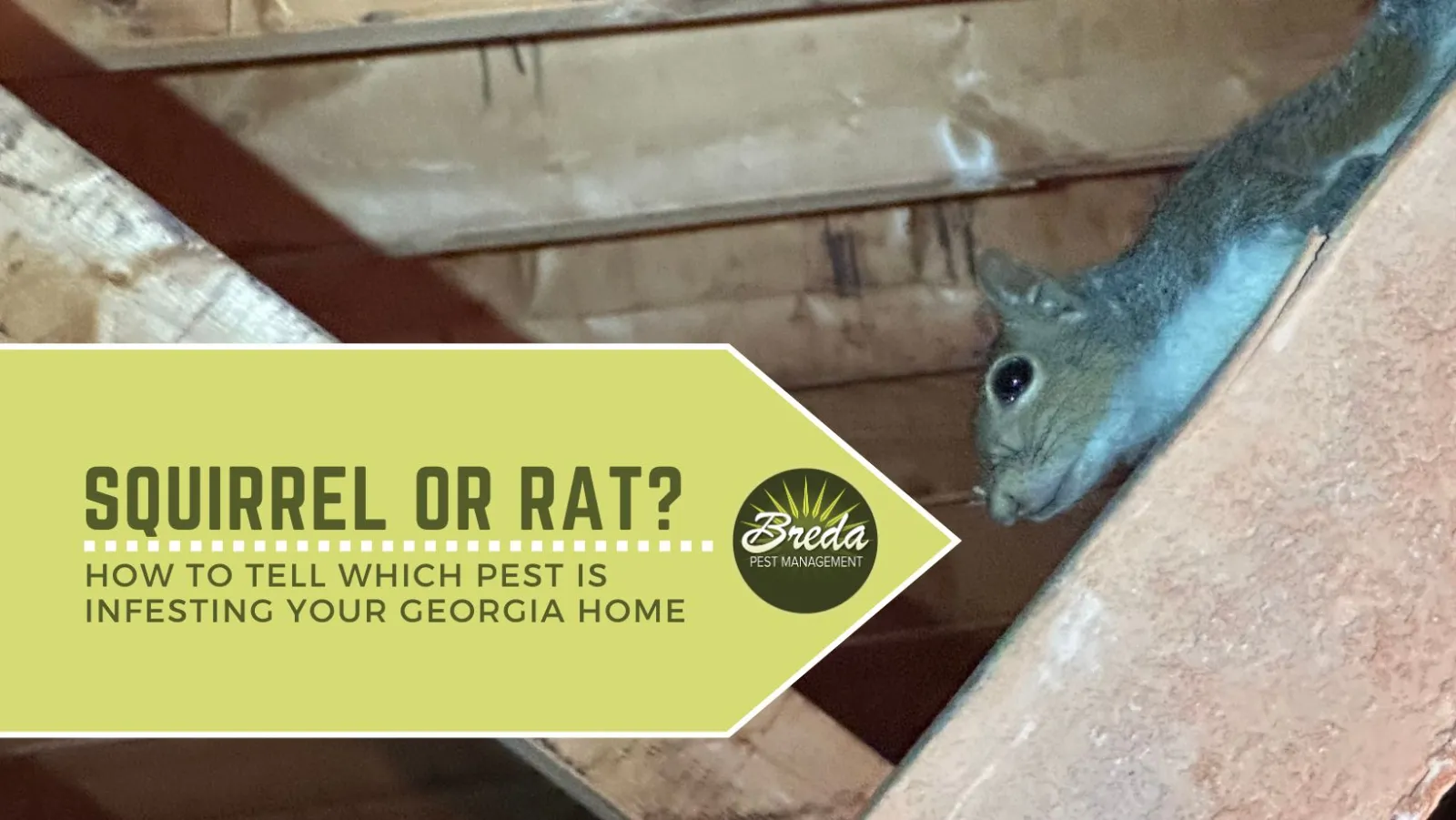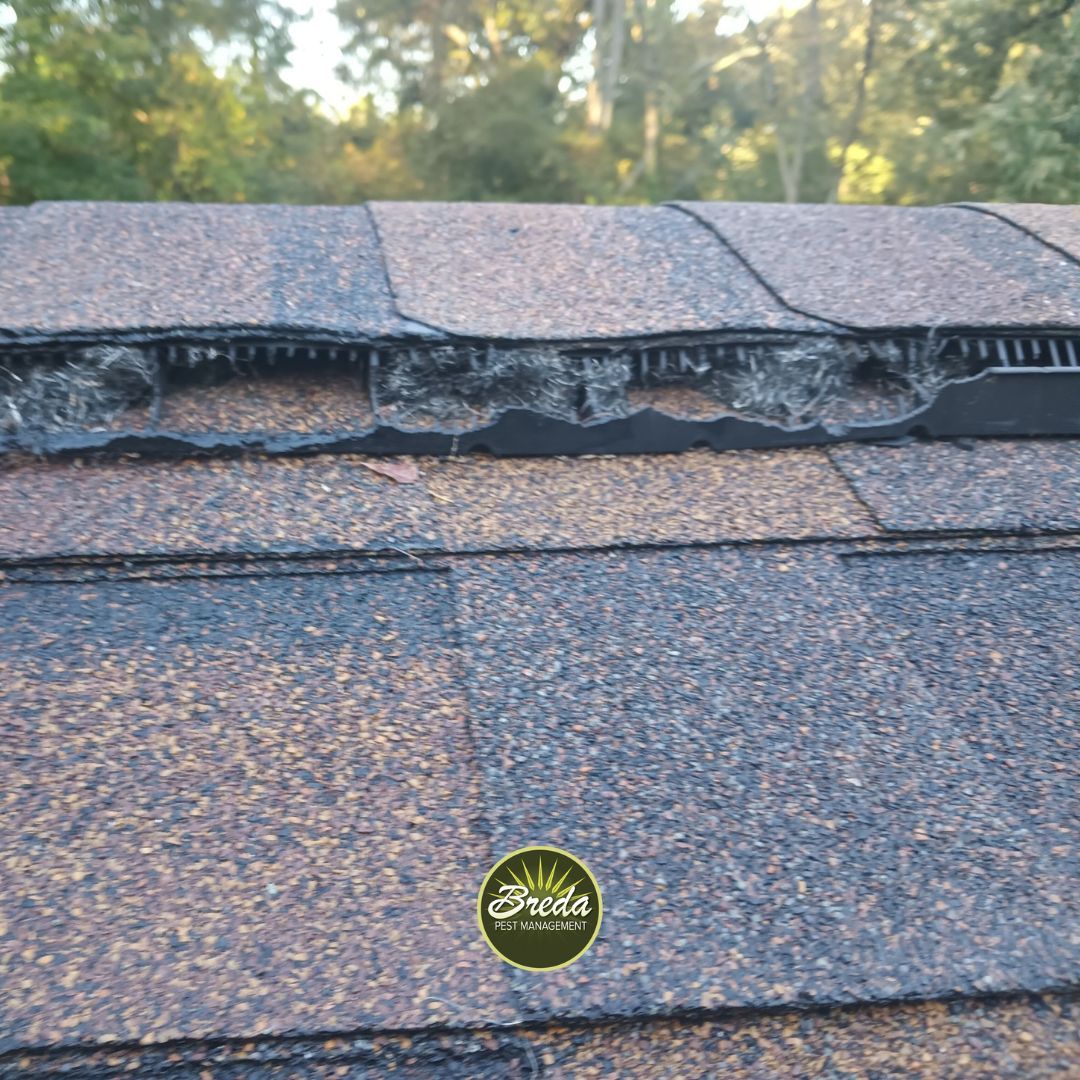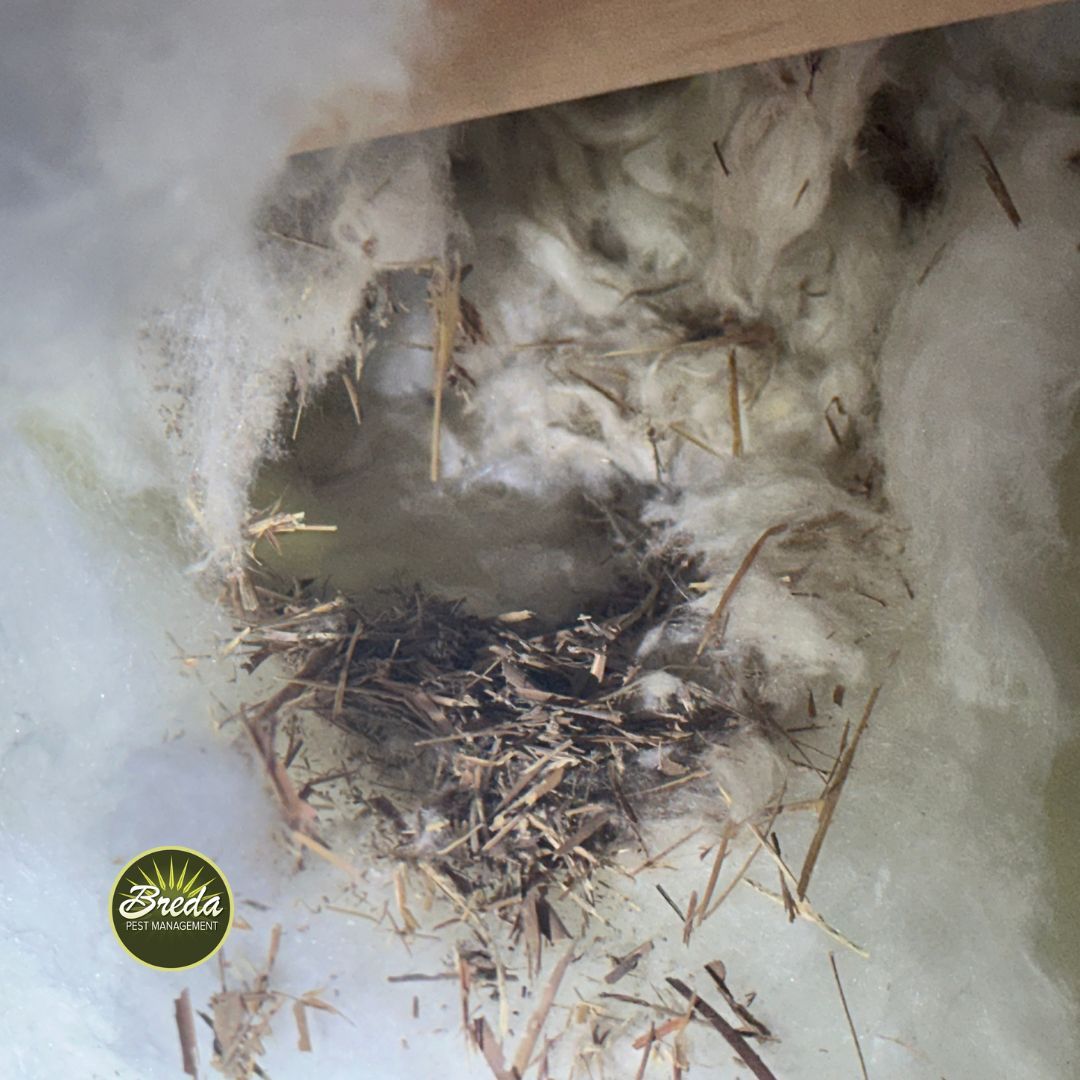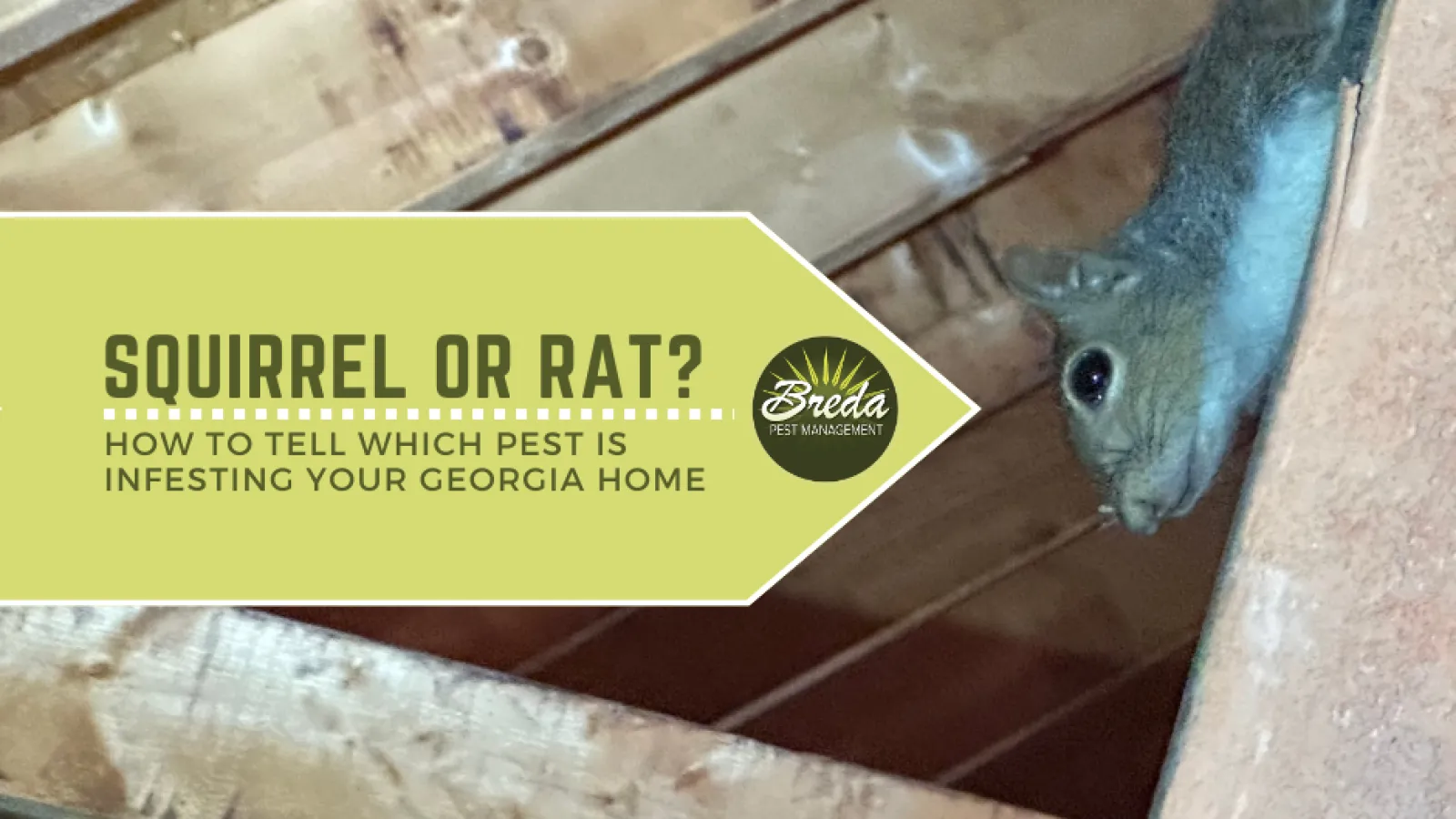
Want to know how to tell if you have rats or squirrels in your attic? Keep reading!
If you're hearing noises in the attic, noticing unusual smells, or finding shredded materials, chances are you're dealing with a trespassing rodent pest. But is it squirrels, rats, or something else? Each creature leaves distinct evidence in its wake, and knowing which pest you're dealing with can make all the difference in choosing the right solution.
In this blog, we'll cover how to identify the signs of different attic invaders—squirrels, rats, mice, and even flying squirrels—so you can get a clearer picture of who's taken up residence in your home.

1. Gray Squirrels: Entry Points and Signs of Damage
Gray squirrels are one of the most common attic invaders in Georgia. Unlike rats or mice, squirrels are not particularly good at concealing their entry points, making it relatively easy to spot the areas they're using to gain access. Here are some key indicators that gray squirrels have entered your attic:
Chewed Entry Points Around Gutters: Squirrels often chew openings near the ends of gutters or along roof edges. These entry points may be visible from the ground and are typically larger than those made by rats or mice, as squirrels need more room to fit through.
Daytime Activity Noises: Squirrels are diurnal, meaning they are active during the day. If you're hearing scratching or scampering sounds in the attic during daylight hours, there's a good chance squirrels are to blame.
Gnawed Wood and Shredded Insulation: Squirrels are notorious chewers, and they often target wood and insulation around their entry points. You might notice bits of shredded insulation or wood splinters around the attic.
If you see signs of large, visible entry points, especially around the gutter, there's a good chance you're dealing with gray squirrels.
2. Rats: Grease Marks and Droppings
Rats can be a more troublesome attic pest than squirrels, as they are nocturnal and much better at hiding their presence. However, they do leave these telltale signs that can help you distinguish them from other pests:
Grease Marks: Rats have oily skin that leaves behind smudges or grease marks on surfaces they regularly use to travel. You may notice these marks along beams, rafters, or entry points as rats move in and out.
Droppings: Rat droppings are generally dark and cylindrical, about half an inch long. If you find droppings scattered along travel routes or near food sources, it's a strong indicator of a rat infestation.
Nocturnal Noises: Unlike squirrels, rats are more active at night. If you hear scurrying or gnawing sounds in the attic after dusk, rats are likely the culprit.
Holes and Damage: Rats can chew through various materials, including insulation, wood, and even wiring, posing fire risks. Look for small holes or damage to wiring and wood around the attic.
These signs—particularly grease marks and droppings—are strong indicators that rats have set up camp in your attic.

3. Mice: Nesting Material and Shredded Boxes
Mice are also common attic pests, though they tend to leave different evidence than rats. One clear sign of mice is their habit of collecting nesting materials. Here's how to identify a mouse problem in your attic:
Shredded Paper or Cardboard Boxes: Mice are always on the lookout for nesting material, and they often tear apart cardboard, paper, or fabric to make a cozy nest. If you notice shredded boxes or materials in the attic, you're likely dealing with mice.
Tiny Droppings: Mouse droppings are small (around a quarter-inch long) and pointed at the ends. These droppings are usually concentrated around nesting sites and food sources.
Burrows in Insulation: Mice sometimes burrow through insulation to create warm, protected spaces. These tunnels are usually small and might be concentrated in one corner of the attic.
Nighttime Noises: Like rats, mice are nocturnal. You might hear rustling or gnawing sounds at night, especially near their nests.
If you find shredded materials, small droppings, and signs of burrows in the insulation, there's a good chance you're dealing with mice.
4. Flying Squirrels: Silent Tunnels Without Droppings
Flying squirrels are less common but still found in Georgia attics. These nocturnal creatures are generally quieter than gray squirrels and can sometimes be harder to detect. Here's how to tell if flying squirrels are nesting in your attic:
Tunnels in Insulation Without Droppings: Unlike other rodents, flying squirrels don't leave droppings around their tunnels. If you spot burrows in the insulation with no visible droppings, flying squirrels might be the culprit.
High Pitched Noises at Night: Flying squirrels are nocturnal, and while they're generally quiet, you may hear occasional high-pitched chirps or squeaks at night.
Small Entry Points Along Roofline: Flying squirrels are adept gliders and often enter homes through small openings along the roofline. These entry points are smaller and less obvious than those of gray squirrels.
Spotting these unique signs can help you determine if flying squirrels have claimed your attic as their home.
How to Handle an Attic Infestation
Once you've identified which type of rodent is in your attic, it's time to take action. Each type of pest requires a slightly different approach:
Seal Entry Points: Regardless of the pest, sealing entry points is essential. Use sturdy materials like steel mesh to close gaps around gutters, roof edges, and vents.
Trap and Relocate (for Squirrels): In many areas, you're required to handle squirrels humanely. Using live traps to capture and relocate them is a common solution.
Bait and Trap (for Rats and Mice): Professional pest control companies like BREDA Pest Management can set up effective bait stations and traps to safely and quickly reduce a rat or mouse population in the attic.
Inspect Regularly: Preventing future infestations involves regular inspections of your attic and exterior. Look for new holes, damage to vents, or signs of chewing around your home.
Preventing Future Attic Infestations
Preventing an infestation is always easier than dealing with one, and these tips can help keep your attic pest-free year-round:
Maintain a Clean Yard: Rodents are often attracted to overgrown yards and nearby food sources. Keep shrubs trimmed, and remove any fallen fruit or debris near the home.
Store Food Properly: For rats and mice, food sources can be a big draw. Store pantry items in sealed containers and avoid leaving pet food out overnight.
Install Screens on Vents and Chimneys: Vents and chimneys can be entry points for pests like squirrels. Consider installing mesh screens to prevent access.
Regularly Inspect Roof and Gutters: Attic-dwelling pests often enter through roofs and gutters. Regular inspections and repairs can help keep these entry points secure.
Take Action to Protect Your Home
Knowing whether you have squirrels, rats, mice, or flying squirrels in your attic can help you choose the right approach to handle the issue. Look for the specific signs each pest leaves behind—chewed wood and insulation for gray squirrels, grease marks for rats, shredded boxes for mice, and burrows in insulation without droppings for flying squirrels. By identifying the problem early and sealing entry points, you can prevent further damage and keep your home pest-free.
If you live in Northeast Georgia and you're unsure which pest you're dealing with, reach out to BREDA Pest Management. Technicians on our wildlife removal team can help secure your attic and provide peace of mind by ensuring all rodents are removed safely and won't be coming back.
If you're tired of wondering what the pests in or around your home are doing and just want them gone, don't hesitate to give us a call. The BREDA Guarantee promises to protect your home and keep it protected—no matter the circumstances. Schedule an inspection online or give us a call at 770-466-6700.




